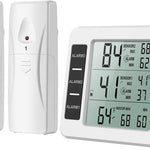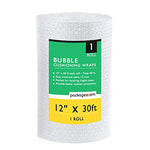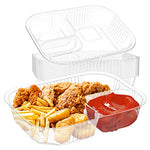You have no items in your shopping cart.
Safety is paramount in the food service industry, and food workers play a crucial role in preventing physical hazards that could harm customers. Whether it's a bustling restaurant, a mobile food truck, or a catering event, ensuring a safe environment is essential. In this comprehensive guide, we will explore various ways food workers can prevent physical hazards from injuring customers. From maintaining a clean workspace to handling equipment properly, we will provide expert insights and industry best practices to safeguard both food workers and customers.
How Should Food Workers Prevent Physical Hazards from Injuring Customers?
To create a secure dining experience, food workers must implement the following strategies:
Understanding Potential Hazards in the Food Service Industry
The first step to preventing physical hazards is awareness. Food workers should be vigilant about potential risks, such as slippery floors, sharp utensils, hot surfaces, and heavy equipment. Recognizing these hazards enables them to take appropriate measures to minimize risks and create a safer environment for customers.
Maintaining a Clean and Organized Workspace
A clean and organized workspace is the foundation of a safe food service establishment. Regularly cleaning and sanitizing all surfaces, utensils, and equipment is essential to prevent cross-contamination and maintain a hygienic environment. Additionally, a clutter-free workspace reduces the risk of trips and falls, ensuring both food workers and customers are safe.
Proper Use and Maintenance of Equipment
Handling kitchen equipment properly is vital for preventing accidents. Food workers should receive training on the correct use of knives, slicers, ovens, and other machinery. Regular maintenance and inspections help identify potential safety issues and address them promptly.
Slip and Fall Prevention
Slips and falls are common causes of injuries in food service establishments. Food workers can prevent such accidents by promptly cleaning up spills, using slip-resistant mats, and wearing appropriate footwear that provides good traction even on slippery surfaces.
Ensuring Proper Lifting Techniques
Handling heavy items like crates or boxes requires proper lifting techniques to avoid strain and injuries. Food workers should bend at the knees, keep their backs straight, and seek assistance for heavy loads to minimize the risk of lifting-related accidents.
Implementing Food Safety Protocols
Food safety protocols not only protect customers from foodborne illnesses but also contribute to overall safety. Properly storing, cooking, and handling food reduces the risk of accidents and injuries caused by contaminated or spoiled ingredients.
Adequate Staff Training and Supervision
Well-informed and trained staff are better equipped to handle potential hazards effectively. Employers should invest in comprehensive training programs and ensure supervisors closely monitor their teams to maintain safety standards.
Promoting Effective Communication
Effective communication among food workers is crucial for preventing physical hazards. Clear communication facilitates task coordination, safety information sharing, and prompt resolution of emerging safety concerns.
Providing Personal Protective Equipment (PPE)
Supplying appropriate personal protective equipment, such as gloves and aprons, significantly reduces the risk of injuries for food workers. Encouraging consistent use of PPE enhances safety in the workplace.
Ensuring Ergonomic Workstations
Ergonomic workstations reduce strain and fatigue, resulting in fewer injuries among food workers. Employers should invest in adjustable chairs, proper lighting, and well-designed workspaces to support the health and well-being of their staff.
Regular Safety Inspections
Conducting regular safety inspections helps identify potential hazards and address them promptly. It is essential to resolve any issues found during inspections to maintain a safe environment for both food workers and customers.
Creating Emergency Response Plans
Having well-defined emergency response plans in place prepares food workers to handle unexpected situations swiftly and efficiently. These plans should cover procedures for fires, injuries, and other emergencies.
Proper Knife Handling Techniques
Knife handling is a critical aspect of kitchen safety. Food workers should be trained in proper knife skills to reduce the risk of accidents and injuries.
Maintaining First Aid Kits
Every food service establishment should have well-stocked first aid kits readily available. Food workers should know the location of these kits and how to use them in case of injuries.
Staying Hydrated
Staying hydrated is vital for food workers, especially in hot kitchen environments. Proper hydration helps maintain alertness and reduces the risk of accidents caused by fatigue.
Proper Handling of Hot Surfaces and Liquids
Food workers should be cautious when dealing with hot surfaces, liquids, and equipment. Proper handling techniques and the use of appropriate protective gear can prevent burns and scalds.
Preventing Cross-Contamination
Cross-contamination can lead to foodborne illnesses and other health hazards. Food workers should follow strict hygiene practices to prevent cross-contamination during food preparation and handling.
Proper Chemical Handling
Food workers must be trained in the safe handling and storage of cleaning chemicals to prevent accidents and exposure to harmful substances.
Monitoring Food Storage Temperatures
Maintaining proper food storage temperatures is crucial to prevent spoilage and foodborne illnesses. Regularly monitoring refrigerator and freezer temperatures is essential.
Handling Food Allergies
Food workers should be knowledgeable about common food allergies and take measures to prevent cross-contamination for customers with specific dietary restrictions.
Fire Safety Training
Fire safety training equips food workers to respond quickly and effectively in the event of a fire emergency.
Addressing Customer Concerns
Actively listening to customer concerns and promptly addressing any issues helps improve overall safety and customer satisfaction.
Encouraging Teamwork and Support
Promoting teamwork and a supportive work culture can contribute to a safer and more harmonious work environment.
Regular Training Refreshers
Regularly updating food workers' safety knowledge through refresher courses ensures they stay informed about the latest safety practices.
FAQs
1. Q: What are the common physical hazards in the food service industry? A: Common physical hazards include slippery floors, sharp utensils, hot surfaces, and heavy equipment.
2. Q: Why is maintaining a clean workspace important in food service establishments? A: A clean workspace prevents cross-contamination, reduces the risk of accidents, and ensures a hygienic environment for both food workers and customers.
3. Q: How can food workers prevent slips and falls in the workplace? A: Food workers can prevent slips and falls by promptly cleaning up spills, using slip-resistant mats, and wearing appropriate footwear.
4. Q: What are some essential items to include in a first aid kit for a food service establishment? A: First aid kits should include bandages, antiseptic wipes, adhesive tape, scissors, and disposable gloves.
5. Q: How often should food service staff undergo safety training refreshers? A: Food service staff should undergo safety training refreshers at least once a year to stay updated on safety practices.
6. Q: What should food workers do in case of a fire emergency? A: In case of a fire emergency, food workers should follow established emergency response plans, evacuate customers and staff safely, and use fire extinguishers if trained to do so.
Conclusion
Preventing physical hazards in the food service industry is a responsibility that every food worker must take seriously. By being aware of potential risks, maintaining a clean workspace, and adhering to safety protocols, food workers can create a safe dining environment for their customers. Adequate training, effective communication, and the use of personal protective equipment are vital components of a secure workplace. By implementing these strategies, food workers can ensure the safety and well-being of both themselves and their valued customers.








